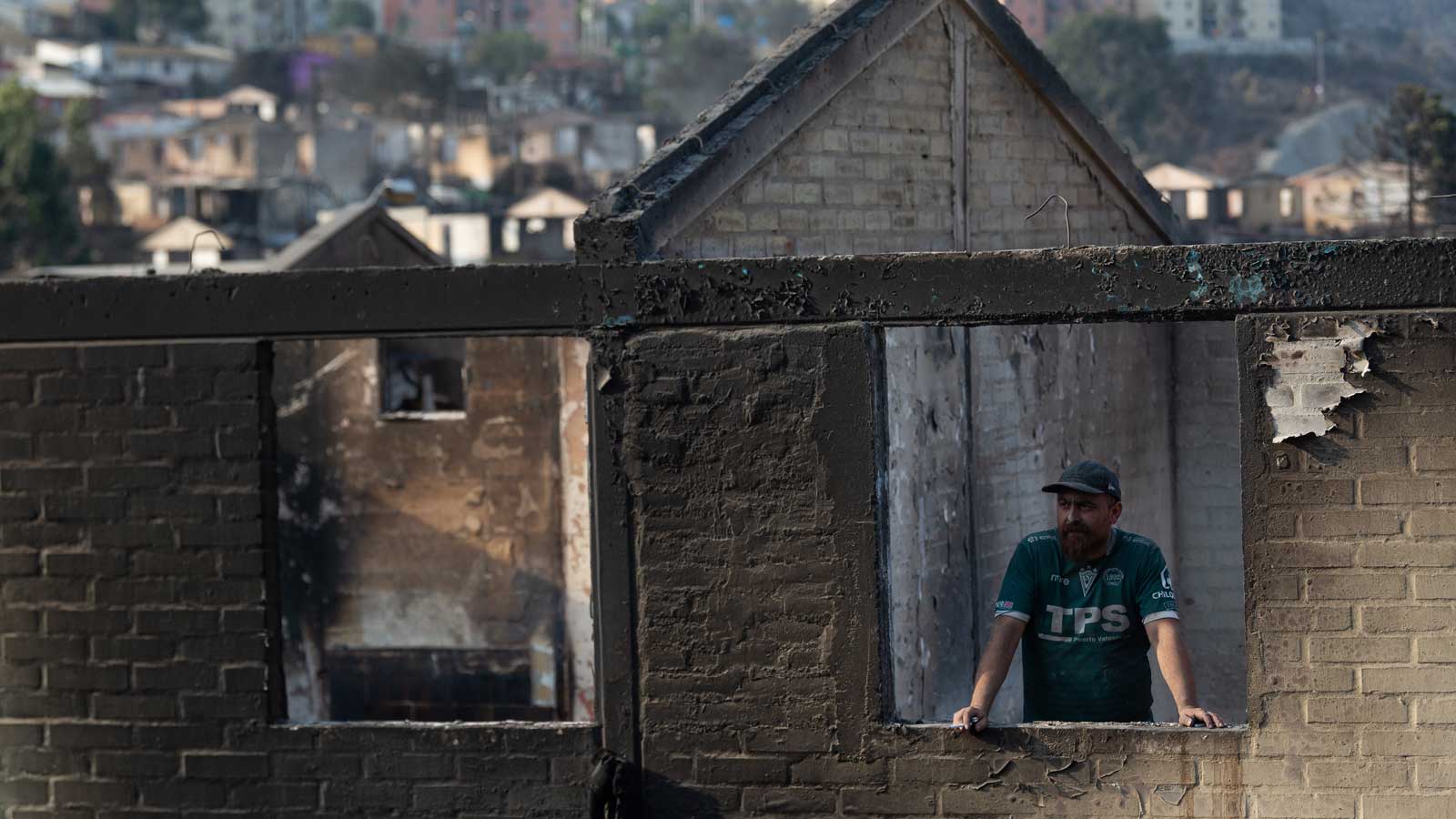The death toll from the horrific February 2-3 fires near the coastal city of Viña del Mar, Chile, has risen to 123, with over 300 people missing. Over 14,000 buildings were damaged or destroyed with damage in the billions. According to statistics from EM-DAT, the international disaster database, this makes the fires the fifth-deadliest worldwide since 1900.
The fires were stoked by near-record warm temperatures that have affected central Chile in recent weeks, with temperatures up to 42.9 degrees Celsius (109°F). The accompanying lack of rainfall has created extreme drought and very dangerous fire conditions. These conditions came on top of the Central Chile megadrought that began in 2010 — the region’s longest drought in at least 1,000 years. This drought has brought precipitation 25-45% below average, lowering reservoirs and causing tensions and social unrest over water availability.
The fires ravaged the Jardín Botánico Nacional de Viña del Mar, a famed 117-year-old botanical garden that served as a refuge to more than 1,300 plant species, some of which were endangered or extinct in the wild. Only 2% of the 1.5-square-mile reserve escaped the flames, and a staff member and three family members living in the garden lost their lives. Miraculously, some of the surviving plants included Ginkgo biloba trees from the park’s “Garden of Peace,” which is made up of plants that survived the atomic bomb in Hiroshima, Japan.
Climate change is driving extreme fire weather in Chile
Just last year, a severe drought with precipitation less than 50% of average hit central Chile. The drought was accompanied by the warmest February on record (up to 2 degrees Celsius above average). The exceptionally severe fire weather conditions that resulted led to a series of intense fires that caused over $880 million in damage (0.3% of GDP) and killed 26, making them Chile’s deadliest wildfires on record. According to a 2024 study, six out of seven of Chile’s most destructive fire seasons on record occurred since 2014. The study authors stated, “the concurrence of El Niño and climate-fueled droughts and heat waves boost the local fire risk and have decisively contributed to the intense fire activity recently seen in central Chile.”
An increase in “hot droughts” worldwide
Many parts of the world are experiencing a shift toward “hot droughts”: droughts associated with less precipitation than average combined with significantly above-average temperatures — a double-whammy that greatly increases the risk of ecosystem impacts and destructive wildfires. This is the kind of drought that affected Chile during its catastrophic wildfires in both 2023 and 2024 and has increasingly been affecting California. A study just published in the Journal of Arid Environments concluded, “Our findings support the idea that anthropogenic warming results in a changing drought climatology for arid and semiarid regions of southern California and that hot droughts will likely become the dominant drought type.”
A concerning increase in deadly wildfires globally
Five of the top 10 deadliest wildfires globally since 1900 have occurred since 2018, according to statistics from EM-DAT (Figure 1). This worrisome trend results not only from climate change but is also caused by an increase in the number of people moving into fire-vulnerable areas — the wildland-urban interface. In addition, poor land management practices have contributed to extreme wildfire activity; for example, in Chile and Portugal, recent catastrophic fires burned through plantation forests densely packed with fire-vulnerable trees. In some regions, fire-prone invasive plants have been a problem, such as in the wildfire that consumed Lahaina, Hawai’i in 2023, killing 100 people. Finally, human-caused ignition sources have increased as more people and more infrastructure go into forested areas.

The indirect wildfire death toll is far higher
Statistics on the toll of wildfires only count direct deaths; premature deaths from inhalation of fire smoke are not included. For the period 1997-2006, an estimated average of 339,000 premature deaths occurred each year worldwide due to inhalation of wildfire smoke. A 2016 study found that the death toll from the air pollution associated with the 2015 Indonesian forest fires was over 100,000. In the U.S., “smoke particulates from wildfires could lead to between 4,000 and 9,000 premature deaths and cost $36 to $82 billion per year in the United States,” according to a 2023 study.
Source link


